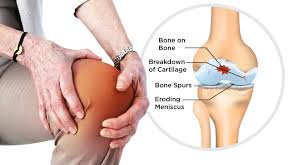Factors that may increase your risk of osteoarthritis include:
Older age. The risk of osteoarthritis increases with age.
Sex. Women are more likely to develop osteoarthritis, though it isn't clear why.
Obesity. Carrying extra body weight contributes to osteoarthritis in several ways, and the more you weigh, the greater your risk. Increased weight puts added stress on weight-bearing joints, such as your hips and knees. In addition, fat tissue produces proteins that may cause harmful inflammation in and around your joints.
Joint injuries. Injuries, such as those that occur when playing sports or from an accident, may increase the risk of osteoarthritis. Even injuries that occurred many years ago and seemingly healed can increase your risk of osteoarthritis.
Certain occupations. If your job includes tasks that place repetitive stress on a particular joint, that joint may eventually develop osteoarthritis.
Genetics. Some people inherit a tendency to develop osteoarthritis.
Bone deformities. Some people are born with malformed joints or defective cartilage, which can increase the risk of osteoarthritis.



 Contact Us
Contact Us







 Hospitals
Hospitals
 Doctors
Doctors
 Diagnostic
Diagnostic
 Pharmacy
Pharmacy
 Health Tips
Health Tips
 Blog
Blog

























Comments